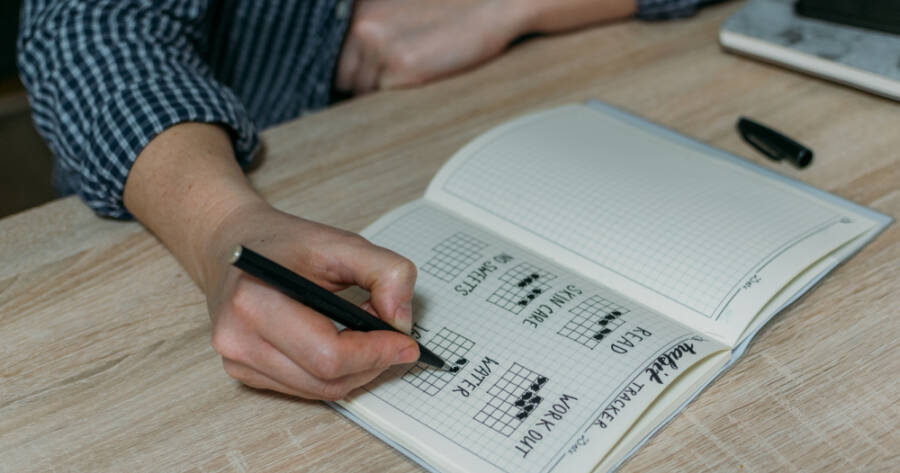In today’s fast-paced world, maintaining mental clarity can be a challenge. The constant flow of tasks, appointments, and ideas often leads to overwhelming stress. Bullet journaling has gained popularity as a simple yet effective way to clear your mind and organize your thoughts. By using this customizable system, you can boost productivity, track progress, and find inner peace.
What Is Bullet Journaling?
Bullet journaling is a flexible planning method created by Ryder Carroll that combines elements of to-do lists, calendars, habit trackers, and journal entries. It’s designed to help individuals stay organized while also reflecting on their goals, emotions, and progress. Unlike traditional planners, bullet journals allow for creativity and personalization. You can design each page to suit your unique needs, which makes it a great tool for enhancing mental clarity.
The beauty of bullet journaling is that it can be adapted to any lifestyle. Whether you’re a student, professional, or busy parent, this system can help you manage daily tasks, long-term projects, and emotional well-being. It also encourages mindfulness and introspection, which can contribute to improved mental health.
Tools You’ll Need to Start Bullet Journaling
One of the most appealing aspects of bullet journaling is its simplicity. You don’t need expensive materials to get started. Here are some basic tools that can help you create your first bullet journal:
1. A Notebook
The foundation of bullet journaling is a blank notebook. You can choose any notebook that feels comfortable to you, but many people opt for dotted or grid notebooks. These notebooks provide a helpful structure without limiting creativity. Popular brands like Leuchtturm1917 and Moleskine offer high-quality options that are widely used in the bullet journaling community.
2. Pens and Markers
A variety of pens and markers can be used to add color and style to your journal. Some people prefer fine-tip pens for precise writing, while others enjoy using colorful markers to highlight key areas. The key is to experiment and find tools that feel comfortable and motivate you to write. Many bullet journalists use gel pens, which offer smooth writing and vibrant colors.
3. Ruler and Stencils
If you want your pages to be neat and organized, a ruler will help you draw straight lines. Some people also use stencils to create decorative elements like boxes, headers, and icons. These tools are not necessary but can be useful if you want a more polished look.
Templates to Include for Mental Clarity
One of the reasons bullet journaling is so effective for mental clarity is its ability to combine structure with freedom. Here are some popular templates that you can include in your journal to help clear your mind and stay organized:
1. Daily Log
The daily log is the core of any bullet journal. It consists of a simple list where you jot down tasks, appointments, and notes for the day. This helps you stay on top of your responsibilities without feeling overwhelmed.
By writing down everything you need to do, you give yourself the freedom to focus on one task at a time, which reduces stress and anxiety.
2. Monthly Calendar
A monthly calendar provides a broader view of your schedule and helps you plan ahead. You can track upcoming events, deadlines, and personal goals.
By mapping out your month, you can prepare for busy days and make time for relaxation or self-care. This template is especially helpful if you have a lot of commitments and need a visual reminder of what’s coming up.
3. Habit Tracker
A habit tracker is a popular tool in bullet journaling that allows you to monitor your habits and behaviors. You can track anything from exercise and sleep to mindfulness practices or drinking enough water.
By seeing your progress over time, you can gain motivation and feel a sense of accomplishment. Habit trackers also promote positive change by helping you stay accountable to your goals.
4. Mood Tracker
Mental clarity is not just about organization; it’s also about emotional well-being. A mood tracker allows you to record your emotions each day, providing insight into patterns or triggers.
You can use colors or symbols to represent different moods, helping you identify areas of your life that may need attention. Reflecting on your emotions can lead to improved self-awareness and emotional balance.
Personalizing Your Bullet Journal for Mental Clarity
While templates and tools are important, the real magic of bullet journaling lies in personalizing it to your needs. Take the time to create a journal that works for you. Experiment with different layouts, color schemes, and design elements until you find a style that feels right. A personalized journal will not only keep you organized but also inspire creativity and mindfulness.
Some people include inspirational quotes or drawings to uplift their spirits. Others incorporate gratitude logs or brainstorming pages for new ideas. The key is to use your journal as a space for self-expression and mental relaxation. Over time, you’ll learn how to tailor your bullet journal to better suit your lifestyle and mental clarity goals.
Clear Your Mind and Boost Your Productivity
Bullet journaling is more than just a trend; it’s a practical tool for improving mental clarity and organizing your life. By using simple templates and personalizing your journal to suit your needs, you can reduce stress, track your progress, and find emotional balance.
Whether you’re looking to boost productivity or enhance your mindfulness practice, bullet journaling can help you achieve your goals and maintain mental well-being. Start small and let your journal guide you toward a more organized and peaceful state of mind.

